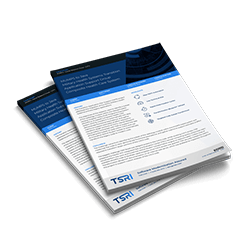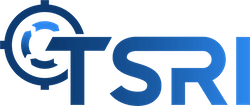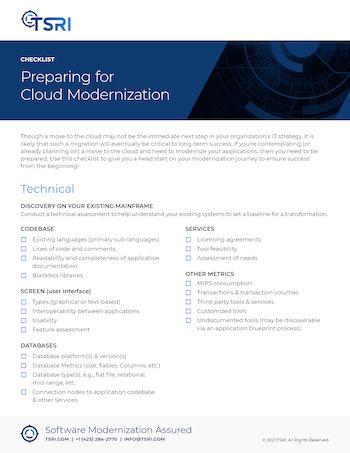Displaying items by tag: cloud
Checklist: Preparing for Cloud Modernization

Is modernizing your software applications to the cloud a topic of discussion in your organization? Though a move to the cloud may not be the immediate next step in your organization’s IT strategy, it is likely that such a migration will eventually be critical to long-term success. If you’re contemplating (or already planning on) a move to the cloud and need to modernize your applications, then you need to be prepared.
With hundreds of large-scale modernizations under our belt, the TSRI team has seen the good, the bad, and the ugly. While no modernization effort is without its bumps, there are things you can do to pave an easier path. We’ve developed a checklist to give you a head start on your modernization journey to ensure success from the beginning!
Technical
Discovery on your existing mainframe
Conduct a technical assessment to help understand your existing systems to set a baseline for a transformation.
CODEBASE
![]() Existing languages (primary sub-languages)
Existing languages (primary sub-languages)
![]() Lines of code and comments
Lines of code and comments
![]() Readability and completeness of application documentation
Readability and completeness of application documentation
![]() Blackbox libraries
Blackbox libraries
DATABASES
![]() Database platform(s) & versions(s)
Database platform(s) & versions(s)
![]() Database Metrics (Size, Tables, Columns, etc.)
Database Metrics (Size, Tables, Columns, etc.)
![]() Database type(s), e.g., flat file, relational, mid-range, etc.
Database type(s), e.g., flat file, relational, mid-range, etc.
![]() Connection nodes to application codebase & other services
Connection nodes to application codebase & other services
SCREEN (user interface)
![]() Types (graphical or text-based)
Types (graphical or text-based)
![]() Interoperability between applications
Interoperability between applications
![]() Usability
Usability
![]() Feature assessment
Feature assessment
-
SERVICES
![]() Licensing agreements
Licensing agreements
![]() Tool feasibility
Tool feasibility
![]() Assessment of needs
Assessment of needs
-
OTHER METRICS
![]() MIPS consumption
MIPS consumption
![]() Transactions & transaction volumes
Transactions & transaction volumes
![]() Third-party tools & services
Third-party tools & services
![]() Customized tools
Customized tools
![]() Undocumented tools (may be discoverable via an application blueprint process)
Undocumented tools (may be discoverable via an application blueprint process)
Physical Mainframe Review
Examines system architecture, technical services in use, and analysis of both internal and external services/applications. We can use this information to map your system to your desired target services and architecture.
![]() Existing architecture survey
Existing architecture survey
![]() Architecture diagram evaluation
Architecture diagram evaluation
![]() External applications assessment
External applications assessment
![]() Utilities and services assessment
Utilities and services assessment
![]() Services overlap within the full application portfolio
Services overlap within the full application portfolio
![]() Performance, quality, and security baselines and metrics
Performance, quality, and security baselines and metrics
SMEs/Personnel
While the technical review is important, it’s also useful to have an understanding of who on the team is able to maintain and develop on your existing systems. The logic and technical requirements may be different once you’ve established your target architecture.
![]() Survey of staffing (existing and future)
Survey of staffing (existing and future)
![]() Assessment of team’s working knowledge of applications
Assessment of team’s working knowledge of applications
![]() Talent assessment within market
Talent assessment within market
As you gather this information, TSRI uses its tools to assess the code, find any code modules/segments within applications that are no longer in use, and generate code-level documentation through a blueprint preview of the current codebase and what a future, modernized codebase might look like. We will then work with you to establish business requirements. Note that while many of these tasks individually take a short time, depending upon the number of applications and the size of your application portfolio, an end-to-end engagement can range anywhere from 1-2 years if your systems have fewer than 10 million lines of code to transform to 4-5 years for much larger portfolios and codebases.
Business
Business case development and financial discovery
Once you have completed a technical analysis and your IT leaders understand your existing systems, it is time to establish your organization’s business cases to modernize your applications and support a modern environment.
-
-
NEEDS ASSESSMENT
![]() Timeframe for project phases and project completion
Timeframe for project phases and project completion
![]() Market and internal demands
Market and internal demands
![]() Then vs. now: evolution of your customer and business needs
Then vs. now: evolution of your customer and business needs
![]() Modern workflows and accessibility
Modern workflows and accessibility
![]() Security posture
Security posture
-
-
CURRENT FINANCIAL STATE
-
![]() Total cost of mainframe and application ownership
Total cost of mainframe and application ownership
![]() Mainframe operating expenses
Mainframe operating expenses
![]() Capital expenditures
Capital expenditures
![]() Amortized costs
Amortized costs
-
-
INTANGIBLE COSTS BEYOND PRICE
-
![]() Market agility
Market agility
![]() Business requirements agility
Business requirements agility
![]() Availability of developers that support legacy systems
Availability of developers that support legacy systems
Download and print your own modernization checklist
While most businesses that rely upon mainframes will need to modernize in one way or another, every organization’s needs will be different. Base your organization’s decisions not just on the flashiest current technologies, but on the methodologies and technologies that will work best for your company today and into the future. TSRI can work with you to complete this checklist assessment to start you on the path of a fully automated mainframe modernization. Contact us now to begin!
TSRI is Here for You
As a leading provider of software modernization services, TSRI enables technology readiness for the cloud and other modern architecture environments. We bring software applications into the future quickly, accurately, and efficiently with low risk and minimal business disruption, accomplishing in months what would otherwise take years.
Get started on your modernization journey today!
COBOL to C# - Retail Client
A $39 billion clothing retailer with 4,300 stores worldwide sought to modernize its suite of mainframe COBOL supply chain applications. These applications supported the client’s unique business process, which provided them with a major competitive advantage and fueled years of unprecedented growth. Today, the clients business logic was preserved and their services are hosted on Azure with data integration directly through service bus queues and scheduling handled via Logic Apps.
 |
Customer: Retail Client Source & Target Language: COBOL to C# Lines of Code: 86,000 Duration: 3 months Services: Code Transformation, Automated Refactoring, Testing and Implementation Support, Transformation Blueprint®
|
United States Air Force - Unisys COBOL to Java ILS-S SBSS Logistics System Modernization
The U.S. Air Force uses the Integrated Logistics System – Supply (ILS-S), of which the Standard Base Supply System (SBSS) is a major part, as a mainstay of their supply chain. The SBSS program includes over 1.5 million lines of COBOL, as well as smaller numbers of C and Assembly, all of which are to be transformed into Java.
- Customer & Integrator: US Air Force
- Source & Target Language: COBOL to Java
- Lines of Code: 1.5 million
- Duration: 11 months
-
Government Modernization Breaks Loose
During the past two months Federal government modernization has gained steam--first with the Administration’s modernization plan, released for comment at the end of August, followed by final movement on the critical Modernizing Government Technology (MGT) Act which gained Senate approval on September 18.
Cloud Migration & Containerization: the TSRI Approach
Code modernization has become increasingly important as we move toward integrated cloud-based and virtualized software environments. Modernization of code permits legacy applications to continue functioning efficiently and securely without a complete rewrite. This makes it possible to meet the demands of today's infrastructure requirements without high cost or compromises in security or functionality. Companies need to expand services, access improved processes and use resources more efficiently. This demands architectural changes. Bringing these trends together, containerization under Docker has created a new model for application deployment that provides numerous advantages to program operation and interoperability, but requires special accommodation.
Ada to Java & C++ - Thales EATMS
The Eurocat Air Traffic Management System (EATMS) is used in 16 European countries and Australia. EATMS became subject to a modernization initiative in 2005. Thales Air Systems selected The Software Revolution, Inc. (TSRI) to modernize this system written in legacy Ada 83. After transforming this application to both Java and C++ for performance testing, Thales selected Java as the final target language and TSRI completed the modernization.
 |
|


